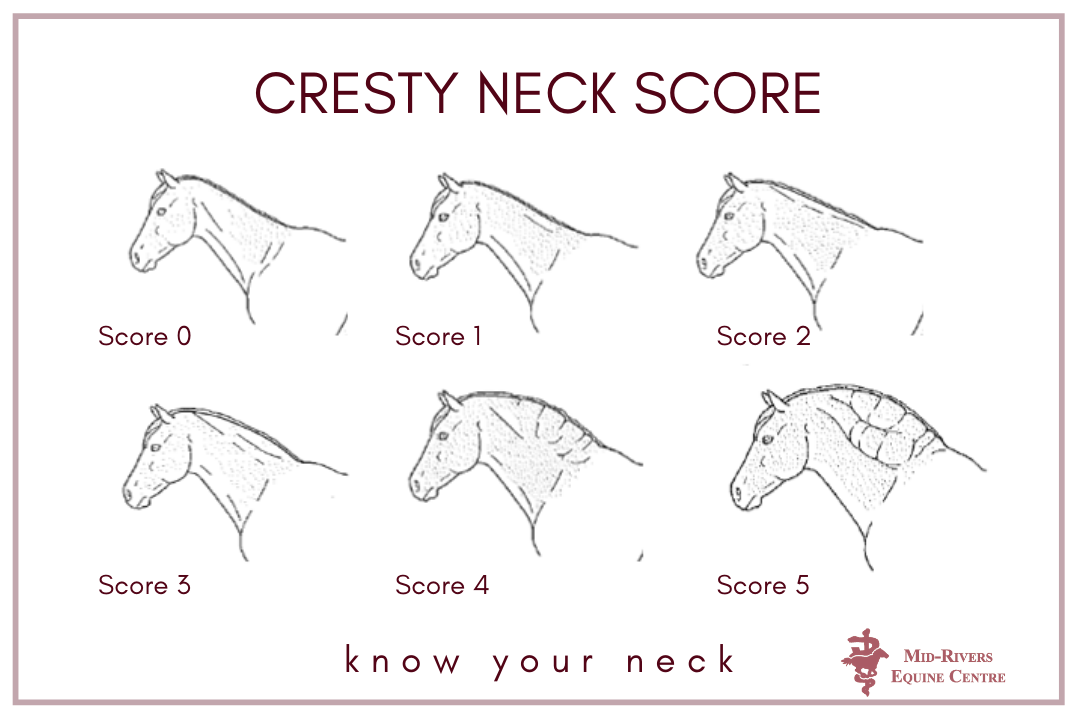|
Equine metabolic syndrome (EMS) is a process that can affect any mature horse. They are noted to display signs of obesity, insulin resistance and chronic laminitis.
EMS is characterized by (1) obesity, especially regional adiposity where fat is accumulated in areas circled in red in the above picture; (2) elevated blood lipids and reduced concentrations of high-density lipoprotein (so-called “good”) cholesterol; (3) insulin resistance and hyperglycemia; and (4) high blood pressure. Since affected horses are frequently obese, insulin resistant and hyperglycemic, there are clearly some legitimate points of comparison with the human disease type II diabetes. Obesity appears to be the central problem in horses suffering from metabolic syndrome. Although body fat is commonly viewed as an inert substance that functions solely as a storage form for energy, nothing could be farther from the truth. Body fat (especially that stored within the abdomen, liver and skeletal muscle) contains cells that are very active metabolically and hormonally, and when present in excessive amounts their effects can trigger a cascade of metabolic disturbances leading to insulin resistance and persistent hyperglycemia. These abnormalities, in turn, exert a variety of deleterious effects on the cardiovascular system, cartilage and bone. One of these effects is increased synthesis and release of cortisol within the peripheral tissues of the body, which may account for the predisposition to laminitis in affected horses. Metabolic syndrome is usually first recognized when chronic recurrent laminitis becomes evident in fat horses lacking other founder triggers. Affected horses are often grossly obese, with excessive accumulations of fat in the crest of the neck, over the rump and around the tail head and in the sheath of male horses. There is no single test that can offer a definitive diagnosis of metabolic syndrome at present, but diagnostic tests that are helpful in arriving at a clinical diagnosis include measurements of insulin and glucose in the blood following a period of fasting. In the face of laminitis symptoms, it is particularly important to distinguish cases of metabolic syndrome from early cases of Cushing’s disease, because the latter horses can be expected to respond to therapy with pergolide while the former group probably will not. Keep in mind that horses that are allowed to be obese in their youth are more likely to develop Cushing's disease at a younger age. Treatment strategies for equine metabolic syndrome focus almost exclusively on reversal of obesity and insulin resistance through strict dietary modification and implementation of an exercise program, if possible. Of course, horses suffering active bouts of laminitis cannot be exercised until founder has been brought under satisfactory control. The most important principle of feeding affected horses is strict limitation of soluble carbohydrate in the diet. |
